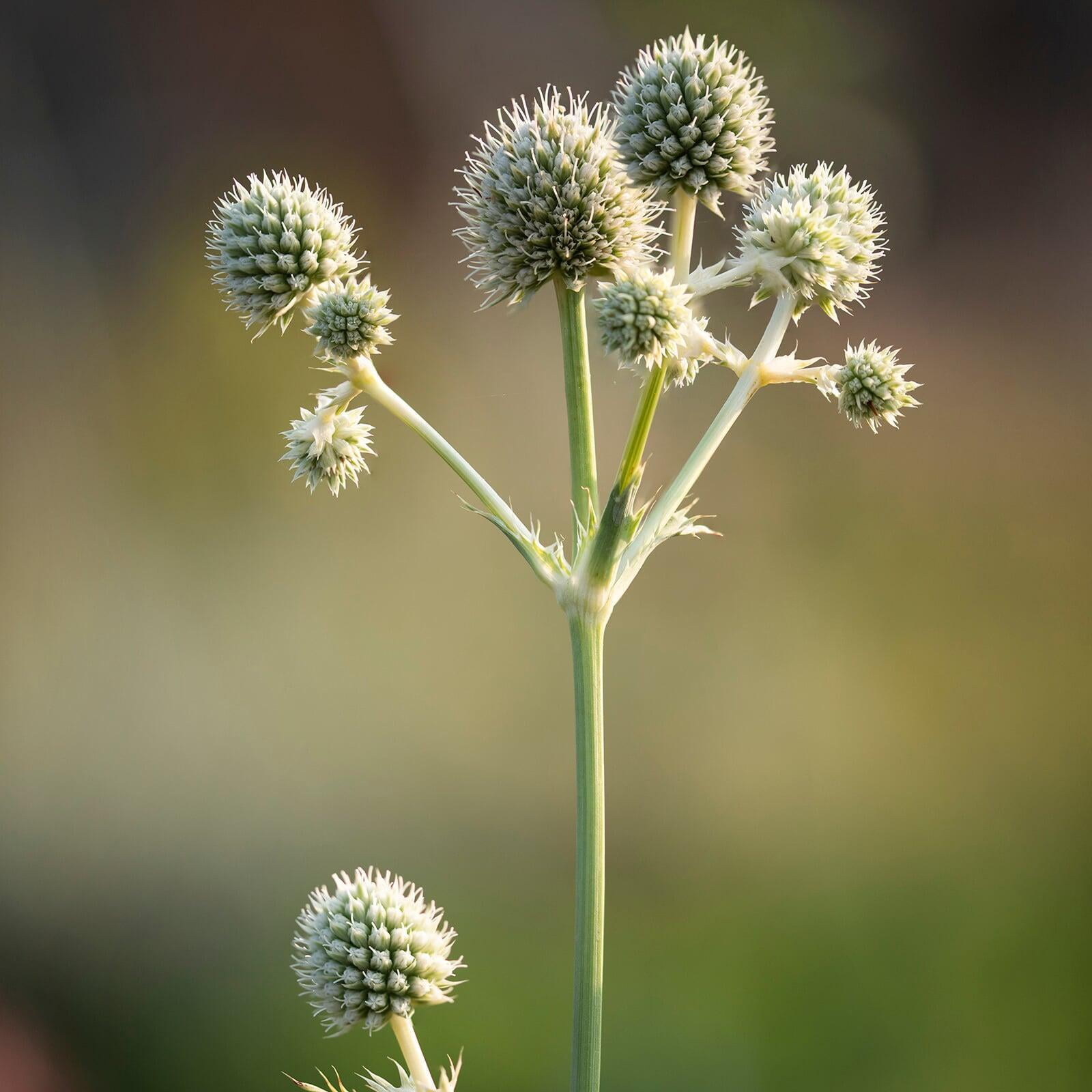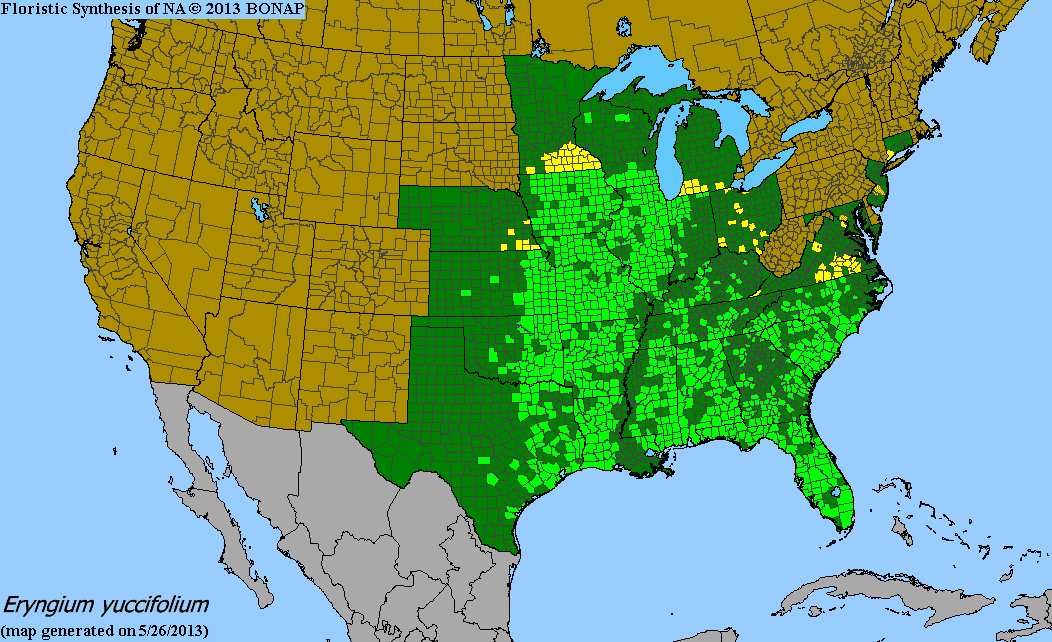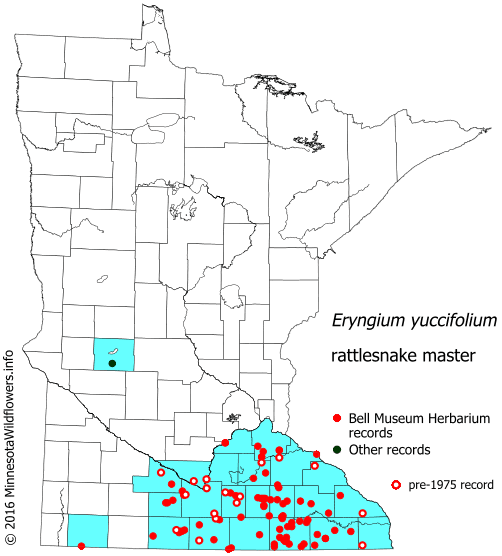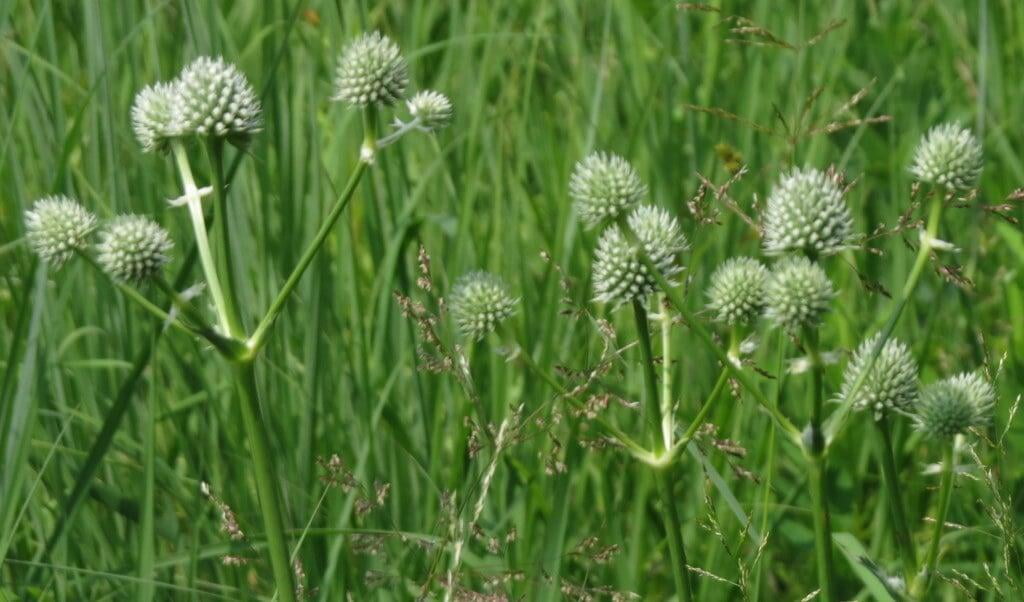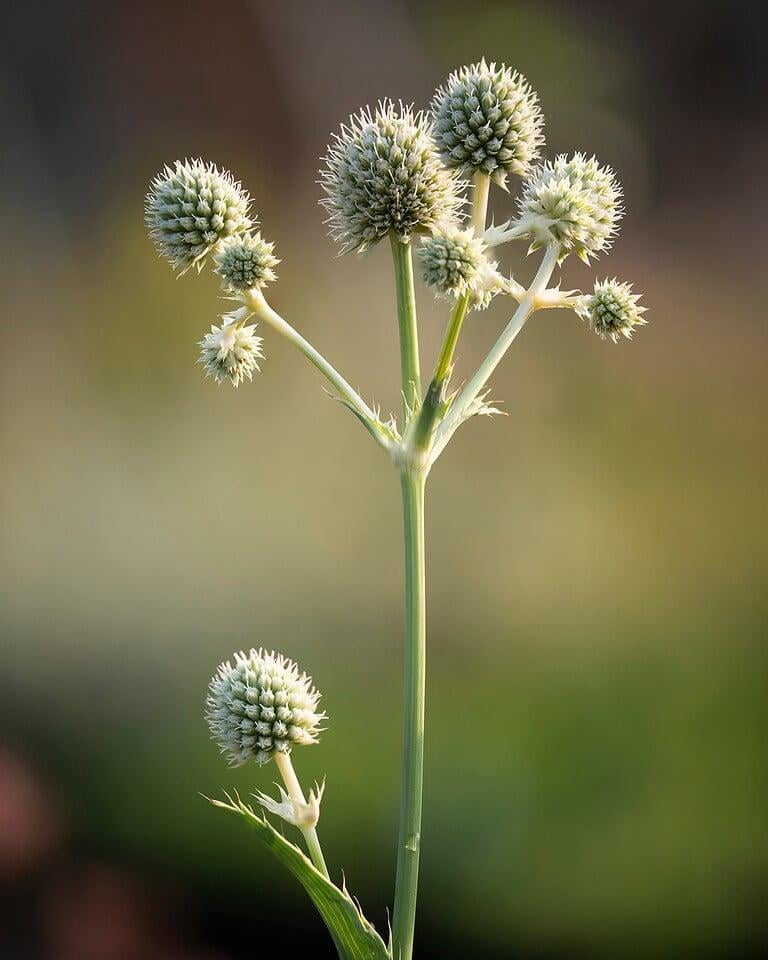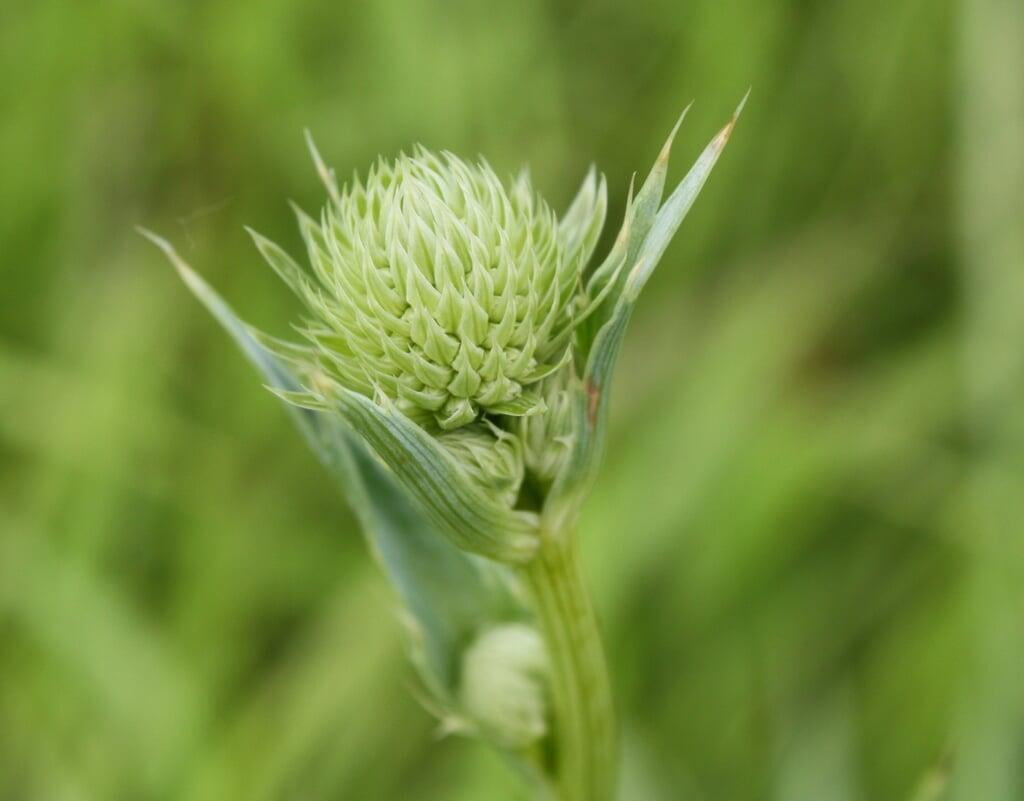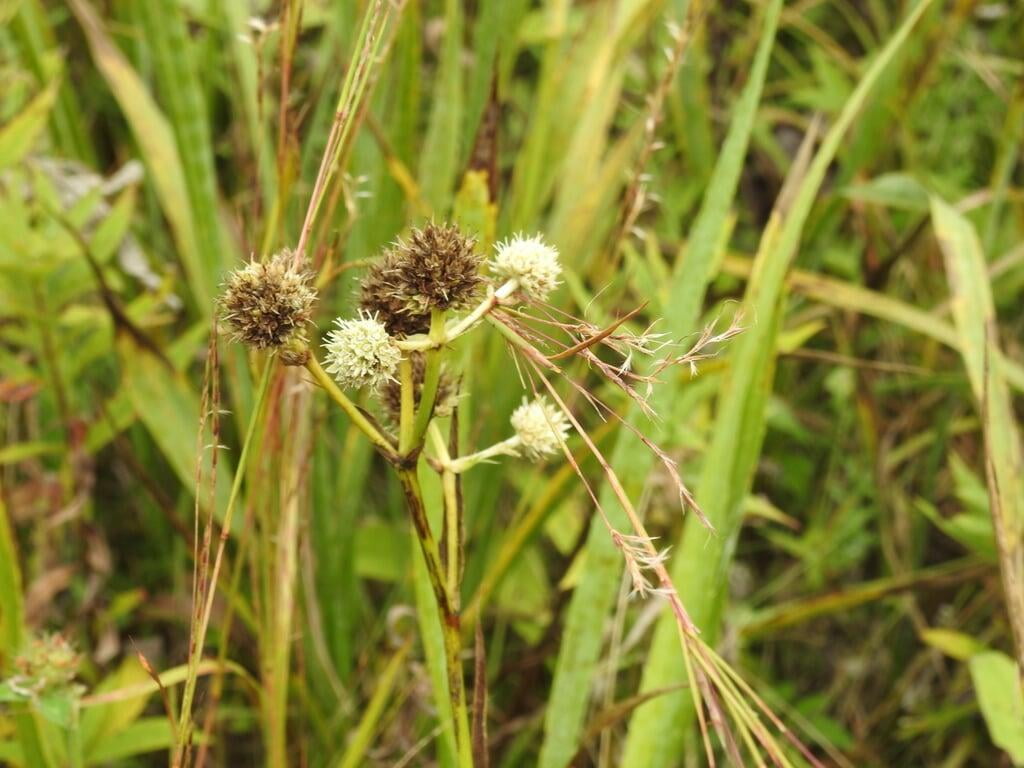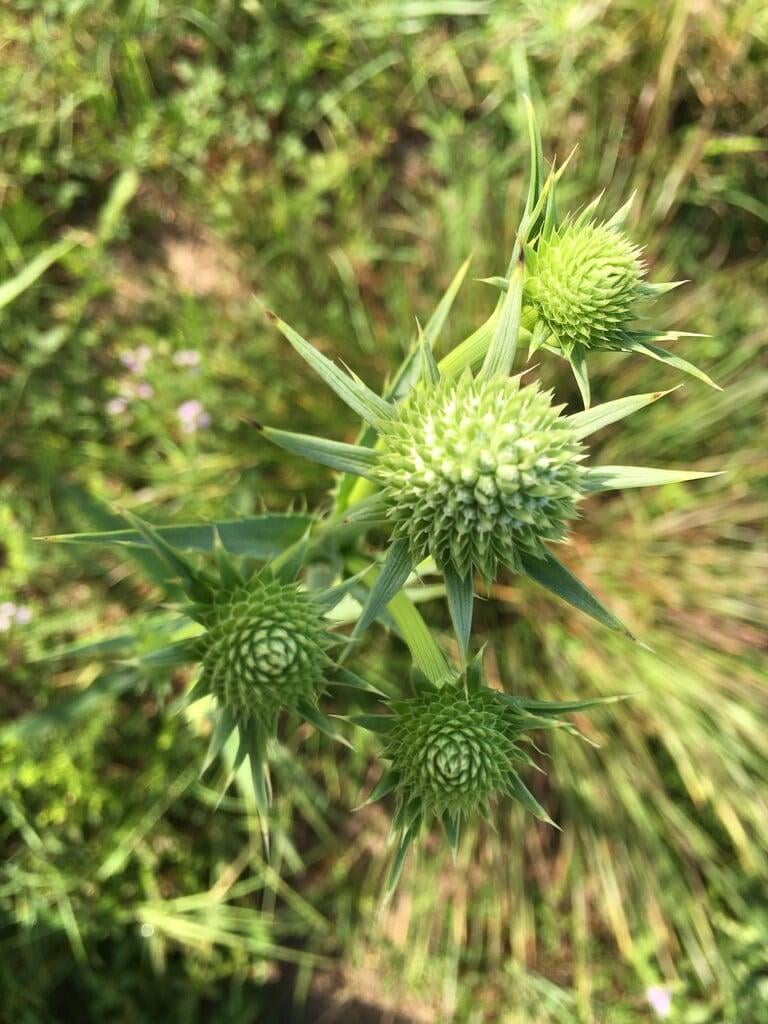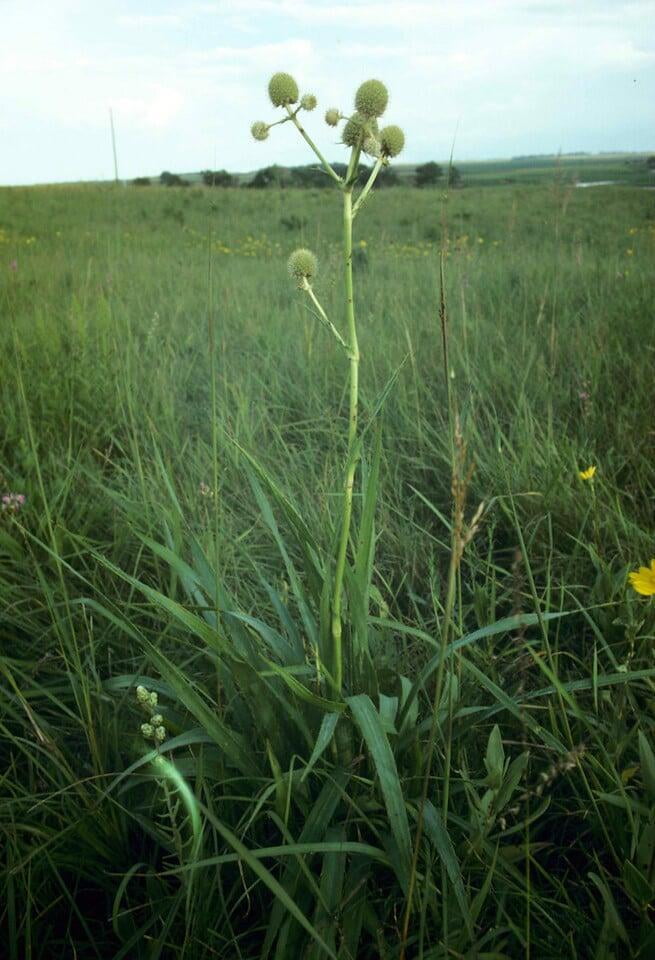Eryngium yuccifolium
Rattlesnake master Description:
Eryngium yuccifolium, also known as rattlesnake master or button snakeroot, is a unique and striking wildflower native to the central and eastern regions of North America. It is commonly found in prairies, meadows, and open woodlands.
Eryngium yuccifolium grows 2-5 feet tall and has a distinctive appearance. It has spiky leaves that are yucca-like, long and narrow with sharp tips, and grow in a basal rosette. The stem of the plant is thick and stiff, and topped with a globe-shaped flowerhead that is usually pale green or white in color. The flowerhead is surrounded by a spiky collar of bracts, giving it a striking and dramatic appearance. The plant blooms from mid-summer to early fall, and the flowers are attractive to many species of pollinators, such as bees, butterflies, and moths.
Eryngium yuccifolium has a long history of traditional medicinal use by Native American tribes. It was used to treat snake bites, hence the common name "rattlesnake master," as well as other ailments such as fever, headaches, and stomachaches. The plant was also used by pioneers to make a tea that was believed to alleviate a variety of symptoms.
Today, Eryngium yuccifolium is a popular ornamental plant in gardens, and its unique appearance and adaptability make it a favorite of landscapers and garden designers. It is also an important plant for conservation, as it provides valuable habitat for wildlife and is an important component of prairie and meadow ecosystems.
Native Range:
Rattlesnake master grows in mostly the central and Southeastern United States.
Standard Plant Information:
Plant Height: 2' - 5'
Bloom Time: July - August
Preferred Habitat: Does well in full sun and moist to dry sandy or loamy soils. Often found in prairies and open woodland.
Sowing:
For most homeowners, the best option is to scatter seed on the ground by hand broadcasting at a minimum of 16-64 pls ounces per acre. For even coverage, we recommend that you broadcast seed in perpendicular rows across the site to ensure even coverage.
You’ll want to broadcast any grass seed first, which will get raked into the soil lightly. Next, it is ideal to mulch the area lightly with either a clean (no seed) straw or preferably with our native Little Bluestem straw, sold at our retail garden centers. After a light mulching is complete, now it’s time to broadcast your native wildflower seeds, which should not be raked into the soil. A good rain or watering is sufficient to cover the seed.
Planting:
Simply dig a hole in the soil slightly larger than the plant’s roots. Ensure that the soil line of the plant is maintained during the transfer (i.e. the plant should be at the same level with the ground as it was in the pot). Pack any loose dirt back around the plant and make sure you water it well the same day to ensure it has the best chance of survival.

